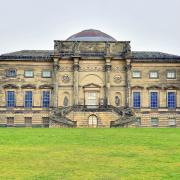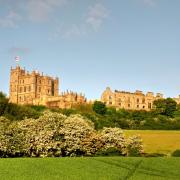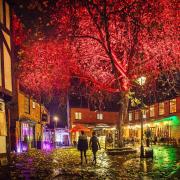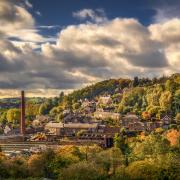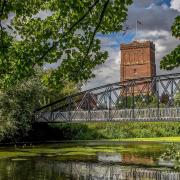Peak District National Park Authority chairman Andrew McCloy on creating a park that is truly for everyone.
This year's 70th anniversary of the Peak District National Park is a moment to reflect on what has been achieved so far and to celebrate the pioneering work of so many people; but it's also a time to look ahead and map out how Britain's first national park can once again help to heal the nation and play its part in a green recovery.
There is an uncanny sense of history repeating itself. The post-war legislation that set up our national parks was part of the great modernising agenda that aimed to rebuild the nation after the upheavals of a devastating world war.
Access to the countryside and protection of our finest landscapes was judged every bit as important as creating a modern welfare state, proper housing and education for all.
Seven decades later and the crisis is instead a global pandemic, but the healing powers of being outdoors, enjoying exercise and a close-up encounter with nature is every bit as important now as it was then.
National parks like the Peak District were set up precisely to offer that freedom and escape, providing opportunities for both mental and physical good health that are vital for our increasingly urban population which has suffered confinement and trauma.
The Peak District National Park, in particular, with 20 million people living less than one hour's journey away, plays that role more than most.
For the National Park Authority, the organisation set up to manage this national asset, it's a delicate balancing act.
Public recreation must be balanced against the need to protect the sensitive landscape and wildlife; and as visitor pressure intensifies, we also need to respect and support the people who live and work here.
But from the start, national parks like the Peak District have been educators that have brought together urban and rural and encouraged tolerance and understanding.
They've explained conservation and the natural world to all ages and backgrounds; and promoted sustainable lifestyles and caring for the environment.
So, as we look ahead to the next 70 years, how will the Peak District National Park continue to lead from the front and what will it focus on?
Prioritising climate and nature
Like other national parks, the Peak District's statutory purposes - why it was set up and its primary focus in law - is about conserving, enhancing and promoting landscape and natural beauty, so it follows that two of our overriding priorities going forwards are to tackle climate change and assist the recovery of wildlife and nature.
As the country emerges from the Coronavirus pandemic, we have the opportunity to build back 'greener' by introducing policies and approaches that are sustainable, benefit the planet as well as people, and where possible are nature-based.
For the Peak District National Park this means accelerating our work restoring the eroded peat moors and encouraging appropriate tree-planting so carbon is locked up and doesn't contribute to climate change.

But we are also working with Government to help roll out a new approach to environmentally-friendly land management that will see some Peak District farmers paid to manage land for biodiversity or make soil improvements, for instance, perhaps assist with flood alleviation or provide responsible recreation opportunities.
The National Park Authority is also planning to develop a more sustainable, long term approach to travel and transport, with the aim of reducing the number of visits to the Peak District by car and instead promoting new walking and cycling routes, bus services, park and ride and so on.
Already we have had constructive discussions with Government, local authorities and community groups like Hope Valley Climate Action.
Investment in these green solutions rather than costly new roads or infrastructure projects must be the way forward and will mean less emissions and more resilience to climate change.
Together with the climate emergency, the nature crisis is a key priority for all national parks and we will play a leading role in the new nature recovery networks being set up by Government.
Already we have been mapping nature recovery zones across and around the Peak District and have ambitious targets to restore habitat and increase particular species. We need more butterflies and moorland birds, healthy rivers and species-rich woodland.
However, the National Park Authority owns only five per cent of the land in the Peak District and we have few powers or controls over others, so we will only succeed by working in partnership - with private landowners, public bodies, wildlife charities and communities.
It's how we've had to do it for 70 years, but it's needed now more than ever.

People power
As the pioneer born out of popular struggle, the Peak District might be tagged the 'People's Park', but for it to remain that way we need to ensure that everyone has the opportunity to access and enjoy the national park.
Although a third of the city of Sheffield is within the boundary of the Peak District National Park, we also know that many people face physical and cultural barriers that prevents or discourages them from visiting.
It may be that they don't own a car and there's no convenient public transport; or their urban upbringing or cultural background means they are totally unfamiliar with a national park - well, it's our remit to try and address that so national parks really are national in the truest sense.
We want to help improve peoples’ health and well-being by not just encouraging fairer access to nature and landscape, but also prompting healthcare professionals to see the benefits of a 'green prescription'.
These range from mental health walks to ranger-led cycle rides, or volunteering in conservation work; and, in particular, we want every child and young people to have a formative national park experience.
However, by 'people' we also mean the communities within the national park. As well as being the authority chair, I'm an elected parish councillor for my Peak District village, and I'm aware of the duty we have to make sure that the 38,000 people who live and work in the national park are also a key part of our plans.
While 13 million visitors a year spend a lot of money in the Peak District and support hundreds of jobs, we also know that it means high house prices, busy roads and the occasional challenge for people like farmers going about their daily business.
So we continue to work as we've always done - from rangers on the ground to the planners trying to negotiate practical solutions - and achieve a balance, so that the national park remains a thriving, sustainable and yet still beautiful place.

National landscapes for all
The Peak District National Park was the first of 15 across Britain and they now cover ten per cent of the UK land mass. That's a large area, but it's also a significant opportunity to make a difference.
Currently, the Westminster Government is considering how best to support and improve the ten national parks in England, and while it deliberates we are pressing on with our plans to deliver a new agenda for people and nature.
Seventy years ago the new Peak District National Park introduced a new audience to our finest upland landscape and safeguarded it for all to enjoy forever; now is the time to kick on.












